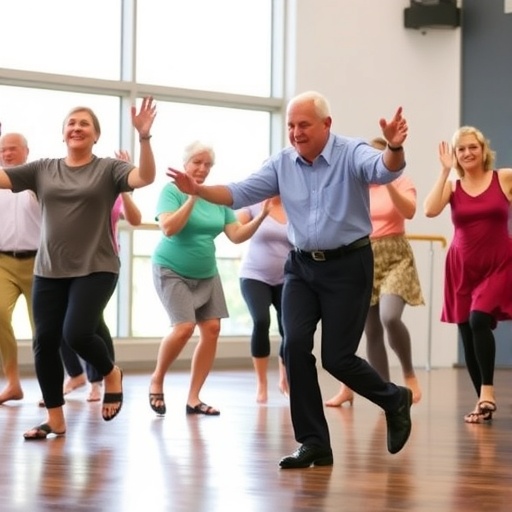Biomechanics, as defined by the ASB, embodies the multidisciplinary study of the interplay between mechanical principles and biological systems. This expansive field touches upon a wide array of disciplines, including biological sciences, exercise physiology, health sciences, ergonomics, and various branches of engineering. It serves as both a basic and applied science that connects theoretical mechanics with real-world biological phenomena. The society fosters an environment for the exchange of ideas among experts from these diverse fields, accelerating scientific discovery and application. Blemker’s work sits squarely at this intersection, leveraging both experimental and computational methods to deepen understanding of muscle function and pathology.
.adsslot_Mj90s4JytW{width:728px !important;height:90px !important;}
@media(max-width:1199px){ .adsslot_Mj90s4JytW{width:468px !important;height:60px !important;}
}
@media(max-width:767px){ .adsslot_Mj90s4JytW{width:320px !important;height:50px !important;}
}
ADVERTISEMENT
One of Blemker’s most significant entrepreneurial contributions is co-founding Springbok Analytics, a cutting-edge company that transforms magnetic resonance imaging (MRI) data into sophisticated three-dimensional models of musculature. This novel technology employs artificial intelligence to analyze and interpret complex imaging data, enabling the precise identification of muscle imbalances, asymmetries, and areas of weakness. These findings can correlate strongly with patient symptoms and injury risks, offering clinicians powerful tools to target therapies more effectively. The system’s wide applicability ranges from elite athletes aiming to optimize performance to individuals suffering from muscular dystrophies and other debilitating conditions.
In 2023, this innovative imaging technology developed by Blemker’s team received clearance from the U.S. Food and Drug Administration (FDA), a critical milestone that validates its safety and efficacy for clinical use. The FDA clearance paves the way for broader integration into clinical practice, where it can facilitate personalized treatment plans. By enabling practitioners to visualize and quantify muscle health in three dimensions, the technology significantly advances diagnostic precision and therapeutic outcomes. This breakthrough exemplifies how biomedical engineering innovations can move seamlessly from the lab bench to bedside, transforming patient management paradigms.
Recognition of Blemker’s pioneering work extends far beyond her entrepreneurial success. The University of Virginia honored the founders of Springbok Analytics with its Innovator of the Year award, underscoring the transformative impact of their technology on athlete health and rehabilitation science. Moreover, in June 2023, Blemker was inducted as a fellow of the National Academy of Inventors, reflecting her exceptional contributions to invention and innovation within the biomedical sector. These accolades highlight her role as a leading figure driving forward the interface of technology, biology, and clinical application.
Blemker’s engagement with the American Society of Biomechanics has been longstanding and influential. Beyond her upcoming presidency, she has previously chaired the ASB’s 2018 annual meeting program, helping to shape the society’s scientific agenda and community outreach. Her excellence in research translation has been recognized with the society’s Goel Award, alongside other honors such as the Pre-Doctoral and Founders’ Awards. She has also received numerous accolades from the Journal of Biomechanics, reinforcing her stature as a prolific and impactful researcher whose work consistently advances the fundamental science of biomechanics.
Her expertise has also been acknowledged outside the society; she earned the Hartwell Foundation Individual Biomedical Research Award, which supports high-impact medical projects with potential to improve human health. Additionally, in 2019, Blemker was elected a fellow of the American Institute for Medical and Biological Engineering, an elite group of leaders in the field who contribute significantly to biomedical innovation. These honors collectively indicate her broad influence across multiple biomedical communities, where her work fosters integration between engineering principles and medical science.
Blemker’s academic background laid a solid foundation for her interdisciplinary success. She earned her bachelor’s degree in biomedical engineering from Northwestern University, a program recognized for integrating engineering with biological sciences. She then pursued a Ph.D. in mechanical engineering at Stanford University, where she further developed expertise in computational modeling and biomechanics. This combination of rigorous engineering training and a passion for biological systems equips her uniquely to drive forward innovations in muscle mechanics and translational biomedical research.
As she steps into her new role with ASB, Blemker has articulated a clear vision centered on community, collaboration, and innovation. In her candidate statement, she emphasized a commitment to enhancing industry partnerships that will foster technological advancement and open new career paths for society members. She stresses the importance of nurturing early-career researchers and students, ensuring that ASB continues to serve as an incubator for the next generation of biomechanical scientists and leaders. Additionally, she plans to expand the society’s funding sources, enabling more ambitious research projects and interdisciplinary initiatives.
Blemker’s presidency will also focus on deepening interdisciplinary collaboration across engineering, biology, health sciences, and movement science. She recognizes that the complex challenges in understanding and treating musculoskeletal conditions require knowledge spanning multiple domains. By fostering stronger connections between these fields, she aims to propel ASB to the forefront of biomechanical science and accelerate the translation of research into clinical applications. Her leadership style is notably people-centric, valuing the vibrant community within ASB as its greatest asset and catalyst for continued growth.
Her dedication to education and mentorship remains a cornerstone of her professional identity. Blemker has expressed great appreciation for how the ASB has shaped both her career and that of her trainees. She actively encourages student participation and values the exchange of ideas on biomechanics education and outreach among society members. By promoting accessible and inclusive educational initiatives, she aspires to broaden participation in biomechanics and inspire future innovators to push the boundaries of the field.
Subject of Research: Biomedical Engineering, Biomechanics, Muscle Biology and Mechanics, Translational Research in Muscle Disease and Rehabilitation.
Article Title: Silvia Blemker to Lead the American Society of Biomechanics: Pioneering Innovations at the Nexus of Muscle Mechanics and Biomedical Engineering
News Publication Date: Not explicitly provided; derived context suggests 2024
Web References:
American Society of Biomechanics About Page: https://asbweb.org/about/
UVA Innovator of the Year Award: https://news.virginia.edu/content/innovators-years-technology-springs-athletes-better-health
National Academy of Inventors Fellowship Announcement: https://engineering.virginia.edu/news-events/news/silvia-blemker-recognized-nai-advancing-muscle-health-through-innovation
Hartwell Foundation Award Announcement: https://news.virginia.edu/content/blemker-deppmann-win-hartwell-biomedical-research-awards
ASB Election Candidate Statement: https://asbweb.org/elections/
Image Credits: Photo by Matt Cosner, UVA Engineering
Keywords: Biomedical engineering, Medical technology, Clinical imaging, Translational research, Physical therapy, Magnetic resonance imaging
Tags: advancing biomechanics through researchAmerican Society of Biomechanics presidentbiomechanics multidisciplinary studybiomedical engineering leadershipcomputational modeling in biomechanicsentrepreneurship in biomedical engineeringexercise physiology and health sciencesinnovative research in biomechanicsinterdisciplinary collaboration in sciencemuscle function researchSilvia BlemkerUniversity of Virginia professor





